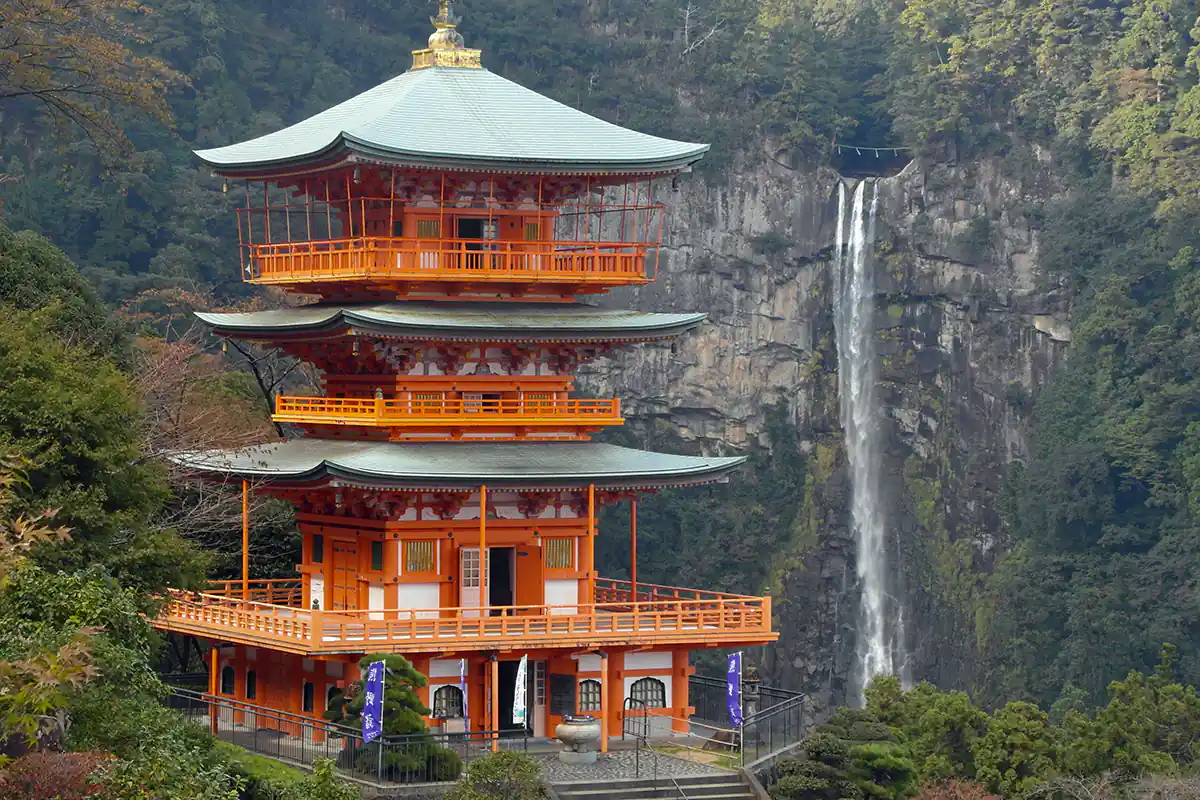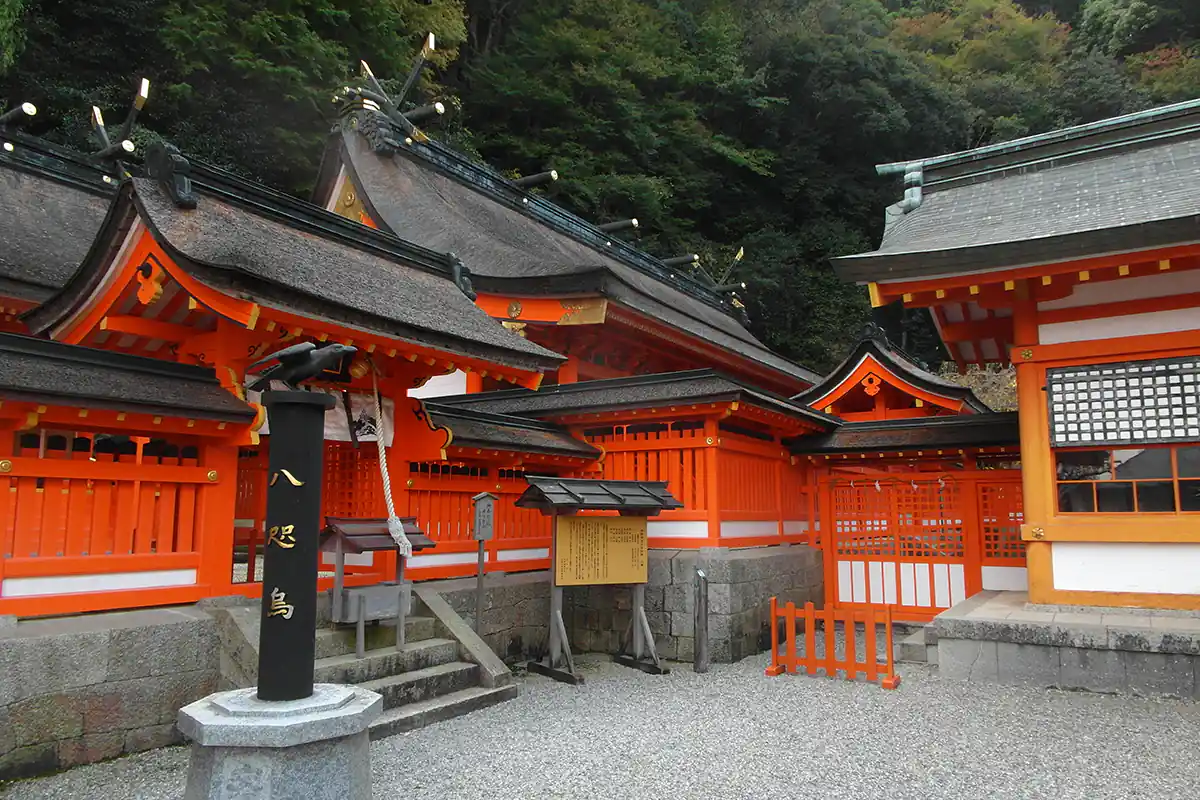Kannon 33 Temples
Seiganto-ji Pagoda, The Temple of the Blue Waves, is a Tendai Buddhist temple in the Wakayama Prefecture on the Kii Peninsula of eastern Honshu. Though the year of its establishment is not recorded, there are signs that nature worship has been carried out since ancient times in the area of the Nachi-no-Otaki waterfalls. There is also a legend that the Indian monk Ragyo Shonin founded the temple during the 4th century. The 133-meter Nachi-no-Otaki waterfalls are the highest in Japan and have been a pilgrimage site for Shinto believers since the 6th century. The kami spirit in the Nachi Falls is named Hiryu Gongen and is one of thirteen deities believed to live in the Kumano area. Translated as the “Flying Waterfall Avatar,” Hiryu Gongen is a deity that amalgamates Buddhist and Shinto beliefs.
The Saiganto-ji Pagoda is the first of the 33 temples comprising the Siagoku Kannon pilgrimage circuit (Saikoku Sanjusansho junrei), one of the most famous Japanese pilgrimages. Kannon is the Japanese name for the bodhisattva Avalokitasvara, or the Bodhisattva of Compassion, one of whose 33 manifestations (the only female one) corresponds to the Chinese bodhisattva Kuan-yin, known in the West as the "Goddess of Mercy."
The Seiganto-ji pagoda is also part of the adjacent Kumano Nachi Taisha Temple, which, along with the temples of Kumano Hongu Taisha and Kumano Hayatama Taisha, are part of the Shinto Kumano Sanzan complex. An ancient pilgrimage route known as the Kumano Kodo crisscrosses the Kii peninsula, leading to the three shrines of the Kumano Sanzan. The veneration of the Kumano shrines as holy sites of Shintoism predates Buddhism's introduction to Japan in the mid-6th century. Once Buddhism arrived in Kumano, it took root quickly, and rather than competing with the indigenous religion for religious authority, it began a long process of harmonious mixing.
The main hall of the Kumano Nachi Taisha temple, built in 1590, is designated as an Important Cultural Property of Japan and exhibits a waniguchi drum (Buddhist altar equipment), Japan's largest of its kind. The enshrined principal image, Nyoirin Kannon (the Bodhisattva of Compassion), is said to grant any wish, including wishes for wealth, wisdom, and power. The image is open to the public only on one day in February.
The entire area of the Nachi-no-Otaki waterfalls, Seiganto-ji Pagoda, and Kumano Nachi Taisha temple flourished as places for Shugendo Buddhist practices; they exemplify the fusion of Buddhist and Shinto influences and were recognized as UNESCO World Heritage Sites in 2004.
For a listing of the 33 Kannon Temples look to this web page:
http://www.taleofgenji.org/saigoku_pilgrimage.html
For additional information on the Seiganto-ji Kannon Temple:
https://www.wikiwand.com/en/Seiganto-ji
https://www.wikiwand.com/en/Nachi_Falls
For additional information on pilgrimages in Japan:
http://www.onmarkproductions.com/html/pilgrimages-pilgrims-japan.html

Martin Gray is a cultural anthropologist, writer and photographer specializing in the study of pilgrimage traditions and sacred sites around the world. During a 40 year period he has visited more than 2000 pilgrimage places in 160 countries. The World Pilgrimage Guide at sacredsites.com is the most comprehensive source of information on this subject.


